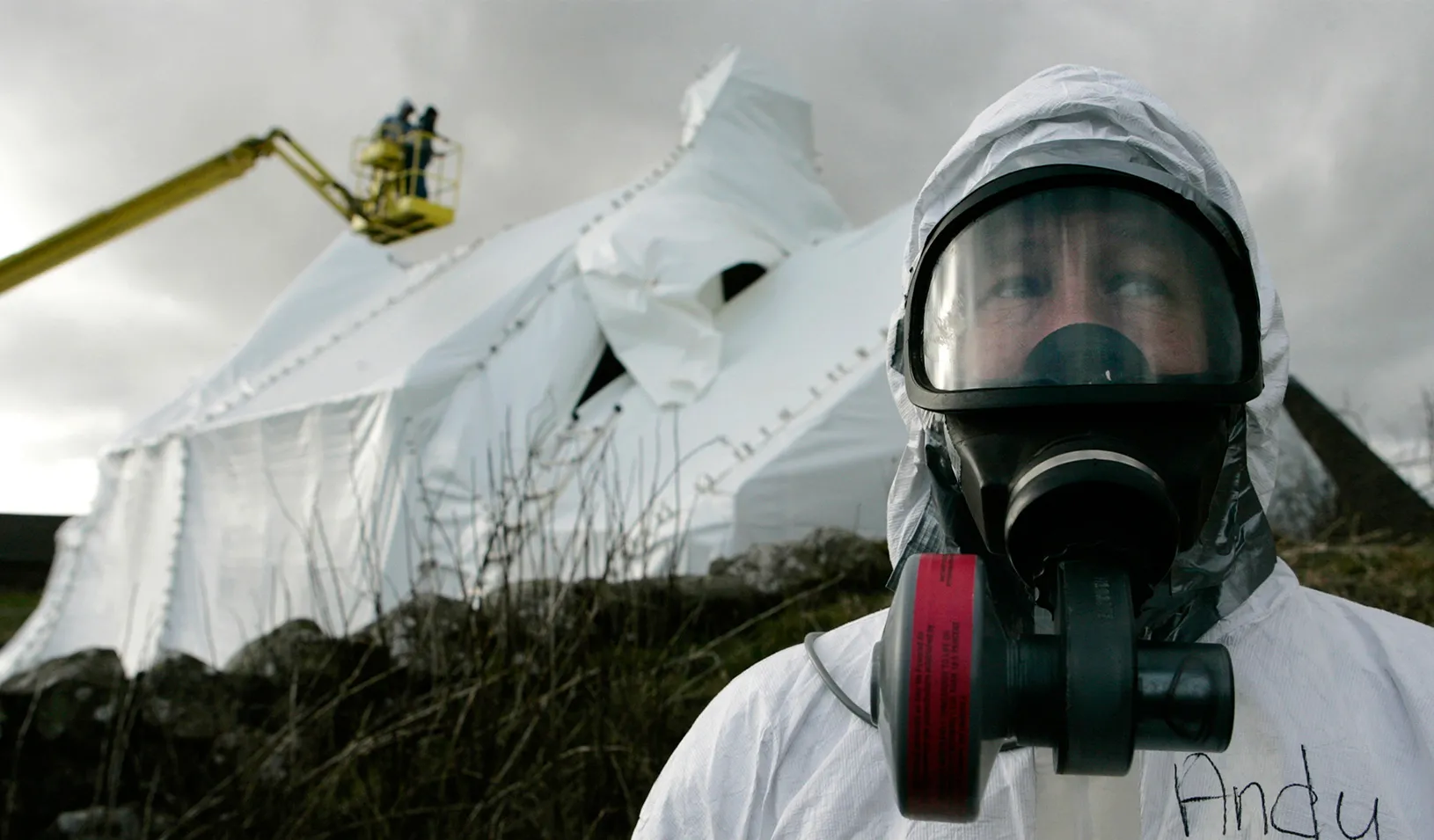Lawrence Wein: Five Disaster Scenarios — and What We Learn From Them
A professor tackles the most effective responses to some of the world’s most dangerous risks.
October 16, 2014

A biological technician decontaminates a scene of an Anthrax outbreak that took place in Scotland in 2007. | Reuters/David Moir
Lawrence Wein, the Jeffrey S. Skoll Professor of Management Science at Stanford Graduate School of Business, applies complex mathematical equations to disaster scenarios — calculating the odds of survival from toxic milk to pandemic flu to nuclear war. He has presented his work at the White House and helped influence U.S. policy. Here are some of the big issues he’s studied over the last 10 years and what his research showed.
Smallpox
Smallpox, a highly contagious infectious disease, killed an estimated 500 million people in the 20th century. Its death rate hovers around 30 percent. This disease has been eradicated since the late 1970s, but some countries have worked to weaponize it.
The research: Wein created models of traced vaccination response — that is, treating only those infected and those who might have come in contact with the infected — and mass vaccination to find traced vaccination could lead to 100,000 to 1 million more deaths. He and his coauthor presented their findings at the White House and Centers for Disease Control and Prevention, which had previously advocated a traced response. Today the government has 300 million vaccines at the ready.
Anthrax
You remember the anthrax scare — suspicious white powder showing up in the mail. This disease caused by bacteria is not contagious, but its fatality rate can be high: 90 to 95% without intervention. Anthrax also stays viable for decades, meaning the spores won’t fade away with time and disinfectant. Several countries, including Iraq under Saddam Hussein, have weaponized it, and an aerosol release of 100 kilograms could kill up to 3 million people.
The research: Wein created a model to examine the hypothetical release of 1 kilogram of anthrax in a metropolitan area the size of New York City. His calculations showed that each day without antibiotics, this city would lose 10,000 people. And even with an efficient response, this city would lose more than 100,000 people. His research showed intervention must begin after the first case, the government must rapidly distribute antibiotics, and hospitals and health clinics must be prepared to handle a surge in capacity. But how to distribute drugs efficiently and effectively? In 2008, Wein proposed in the New York Times that postal workers could do so. In 2009, the government and postal unions agreed to hand-deliver antibiotics in large cities in case of an attack.
Botulinum Toxin
Botulism is poisoning by the toxin secreted by the bacterium C. botulinum. One of the most lethal toxins known to humans — one millionth of a gram could prove fatal — botulinum toxin could potentially be slipped into milk, fruit juices, and possibly even grains.
The research: Wein analyzed the model of milk distribution (and weaknesses in the supply chain) in the United States to find that 4 grams slipped into a milk production facility could cause serious harm — even death — to 400,000 people. He also determined that industry investments costing the public about two pennies more per gallon of milk would prevent that scenario. He suggested deterrents such as locks on tanks, a 15-minute toxin test on milk before it gets released into silos, and an intensified heat pasteurization process. After 9/11, the government scaled up that pasteurization process, which may mean this toxin is less of a threat today.
Pandemic Influenza
The flu kills about 36,000 people in the United States each year, according to the Centers for Disease Control and Prevention. A pandemic outbreak of it would dwarf all these other disaster scenarios, Wein says. With influenza, there may be no vaccine or prophylactic antivirals during the first wave of a pandemic, and there’s little hospitals can do.
The research: Wein studied the routes of influenza transmission to determine the most common is aerosol. That means hand washing, a favorite prevention technique, would do little, but proper ventilation could help. His research found by far the best way to prevent transmission was face protection, particularly N95 respirators. These masks filter at least 95% of airborne particles and are commonly worn, for example, by construction workers. Surgical masks are also effective, though slightly less so.
Nuclear Attack
Should a terrorist succeed in setting off a nuclear weapon, how should people react? What’s the best course of action to hope for survival?
The research: Wein modeled the impact of a 10-kiloton nuclear device, slightly smaller than the bomb that the United States unleashed on Hiroshima, Japan, in 1945, that hypothetically explodes in Washington, D.C., on a weekday morning. Immediately, about 80,000 people would die. If the city attempted to evacuate, he found, about 180,000 people would be killed overall. If instead people took shelter for 12 to 24 hours, about 120,000 people would die in total. He recommended the government update its recommendation from selective evacuation to sheltering, which it did.
For media inquiries, visit the Newsroom.
Explore More

Medicaid Expansion Increased Spending Without Boosting Benefits

How Obamacare Has Improved Farmworkers’ Health



